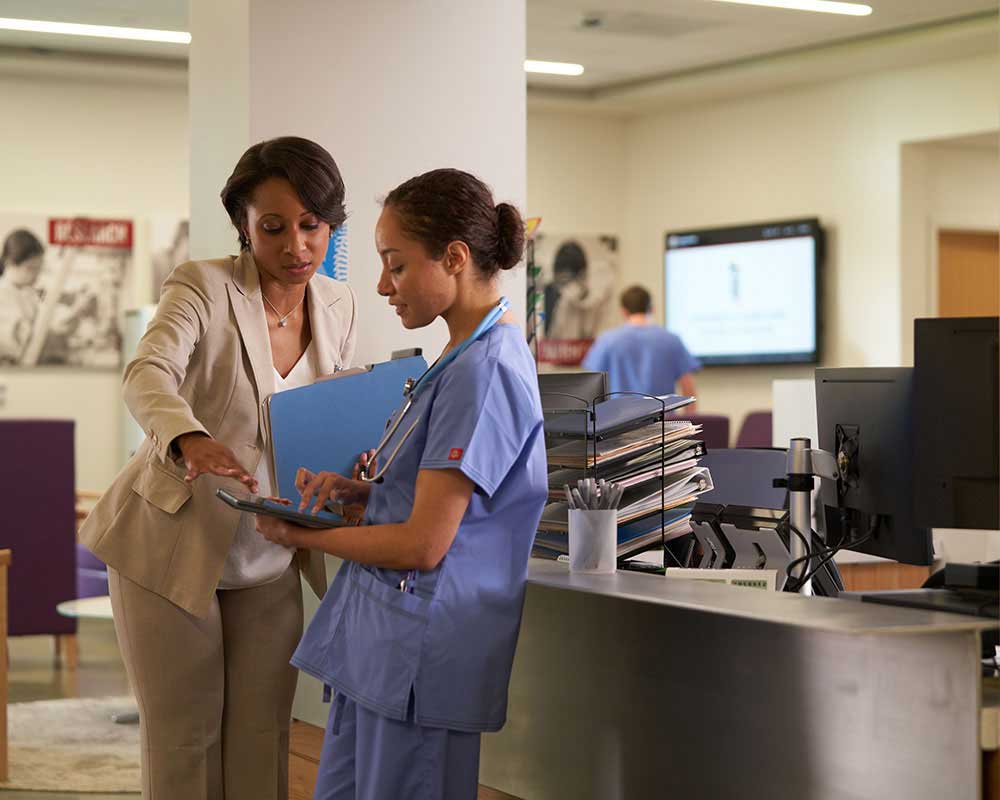Why Medical Administration is Necessary for Smooth Healthcare Operations
Why Medical Administration is Necessary for Smooth Healthcare Operations
Blog Article
Ideal Practices in Medical Management for Improving Effectiveness and Decreasing Prices
In the ever-evolving landscape of medical care, the search of ideal methods in clinical administration is vital for boosting performance and curbing costs. By integrating advanced modern technologies such as electronic health and wellness records and telemedicine, health care providers can improve operations and enhance patient care.
Leveraging Advanced Innovation
In today's swiftly developing medical care landscape, leveraging innovative innovation is no more optional yet crucial for reliable clinical administration. The integration of digital options into healthcare systems has actually transformed the method facilities operate, improving procedures and boosting person treatment. Electronic Health Records (EHRs) are pivotal, giving extensive client information that can be accessed promptly by authorized personnel, thus lowering redundancy and minimizing errors. By systematizing individual information, EHRs remove the requirement for troublesome documents and help with smooth interaction amongst doctor.
Telemedicine is another technical innovation that has actually changed patient communication. It offers comfort for both clients and medical care experts by making it possible for remote examinations, which can minimize the requirement for in-person visits and enhance consultation organizing. In addition, telehealth systems can extend medical care access to country or underserved locations, linking voids in care distribution.
Moreover, making use of Expert system (AI) and artificial intelligence is coming to be significantly common in anticipating analytics, permitting for very early discovery of potential health and wellness issues and more enlightened decision-making. These modern technologies, when integrated efficiently, can enhance analysis accuracy and personalize client treatment plans, ultimately causing boosted health care end results and functional effectiveness.
Optimizing Resource Allocation
By strategically handling sources such as workers, equipment, and financial resources, healthcare centers can considerably boost their functional performance, improve patient end results, and decrease unnecessary expenditures. The initial action in maximizing source allotment entails carrying out a thorough evaluation of existing possessions and identifying locations where resources might be underutilized or overextended.
Prioritizing source allocation based on client needs and service needs is important. Implementing flexible staffing versions can additionally enhance labor sources by changing personnel appropriation in reaction to fluctuating individual quantities.
Funds need to be meticulously checked and designated with strategic foresight to sustain both short-term functional needs and lasting institutional goals. This consists of investing in training programs that enhance personnel proficiencies and adopting energy-efficient methods that minimize functional prices (medical administration). Ultimately, an enhanced source allowance strategy cultivates a sustainable medical care environment that is responsive, reliable, and financially sensible
Streamlining Operations Procedures
When medical care facilities objective to boost functional effectiveness, simplifying process processes ends up being a pivotal emphasis. Efficient operations minimize redundancy, get rid of unneeded actions, and improve sychronisation amongst healthcare professionals. This approach not just increases service distribution yet additionally improves the high quality of client care.

Following, innovation assimilation plays a significant duty in streamlining workflows. Implementing digital health and wellness records (EHRs) and electronic medical professional order access (CPOE) systems decreases documents, reduces human mistake, and makes sure info is obtainable to all appropriate personnel. In addition, leveraging telemedicine platforms can improve individual consultations and follow-ups, minimizing the strain on physical infrastructure.

Inevitably, structured operations cause set you back decreases and boosted patient satisfaction, promoting a much more lasting healthcare setting.
Enhancing Data Administration
Structure upon structured operations, maximizing information monitoring ends up being a crucial part beforehand health care management. Reliable information management systems are crucial for maintaining accurate patient documents, improving decision-making, and guaranteeing conformity with regulative standards. By carrying out durable information monitoring solutions, medical care facilities can boost the high quality of individual treatment while concurrently decreasing functional prices.
One secret aspect of enhancing information administration is the integration of advanced digital health document (EHR) systems. These systems assist in the smooth exchange of patient details throughout different divisions, decreasing duplication of examinations and minimizing mistakes. A properly designed EHR system supports information analytics, enabling healthcare carriers to recognize trends and make informed choices pertaining to individual care.
Moreover, securing client data is extremely important. Adopting detailed cybersecurity actions, including file encryption and regular audits, guarantees the integrity and confidentiality of sensitive information. This not only safeguards clients however likewise preserves the establishment's track record.
Buying personnel training is an additional essential element. Educating healthcare experts on information monitoring techniques read here enhances their ability to effectively utilize technology, bring about boosted patient outcomes. In final thought, boosting data monitoring via sophisticated modern technology and extensive training is crucial for achieving effectiveness and expense decrease in medical administration.
Fostering Collaborative Interaction
A vital component ahead of time medical management is fostering collective communication amongst healthcare experts. Reliable interaction is paramount for making sure smooth client treatment, optimizing read the article therapy end results, and lessening errors. By urging open dialogue and coordination across multidisciplinary teams, healthcare organizations can improve their functional efficiency and minimize unneeded expenses.
Central to this method is the integration of interaction technologies such as electronic wellness records (EHRs) and safe messaging systems, which promote the quick exchange of crucial person info. These tools enable doctor to access and share data in actual time, making sure that all staff member are notified and straightened in their decision-making processes. Routine group conferences and interdisciplinary rounds can better promote a culture of cooperation and accountability.
Educating programs focused on improving interaction abilities are likewise vital. Eventually, cultivating collaborative interaction leads to improved health care distribution and expense financial savings.

Verdict
Including innovative modern technology, such as electronic wellness documents and telemedicine, alongside maximized source appropriation and streamlined operations procedures, is crucial for boosting effectiveness in medical management. Reliable data management and promoting collaborative communication among healthcare groups are essential for minimizing redundancies and boosting care high quality. By prioritizing precautionary care and taking part in top quality enhancement initiatives, medical care companies can attain significant cost savings and boosted person end results, thus making sure lasting medical care distribution in a progressively complicated setting.
Report this page